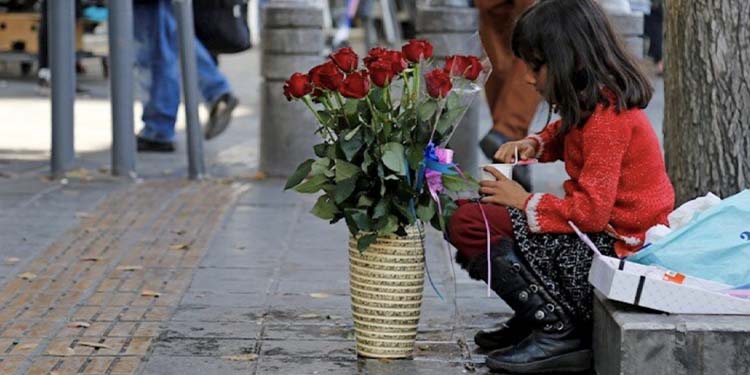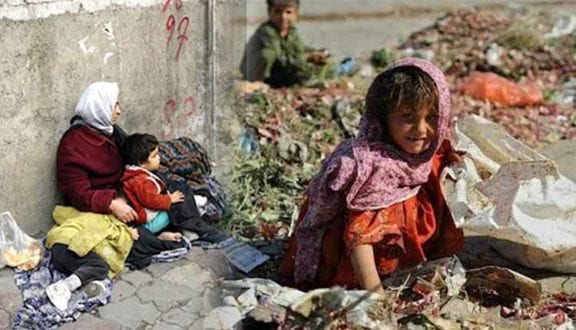Iran-HRM – June 12 is World Day Against Child Labor. According to the United Nations Convention on the Rights of the Child, members of the United Nations General Assembly, including Iran must combat the economic abuse of children, but the number of child laborers in Iran has increased due to poverty as well as lack of action on the part of regime officials.
In Iran, the labor of children under the age of 15 is considered a crime and is banned according to article 79 of the Labor Code. According to Article 80 of the same law, “workers” aged 15 to 18 are considered “juvenile workers” and can be officially employed.
The lack of government support and solutions on the issue of child laborers in Iran shows that child laborers are not important to Iranian officials and that these children have no share in their own country.
The addiction of parents, increasing poverty, inflation, and high prices are among the main factors behind the rise in child laborers in Iran.

Unknown statistics
There are no official statistics on the number of child laborers in Iran and the numbers provided by various officials vary greatly.
The Statistics and Strategic Information Center of Iran’s Labor Ministry published its last report in June 2019 on the status of child laborers, but the statistics pertained to 2017.
According to the report, more than 336,000 boys and 74,000 girls were working in 2017. In addition to these child laborers, close to 90,000 children were looking for work.
Half a million children in Iran were said to have been child laborers according to the 2017 statistics which showed a 6% and 9.6% increase compared to 2015 and 2016 respectively.
Piruz Hanachi, the Mayor of Tehran in 2019 had said that 409,000 children had been identified as child laborers in Iran.
This is while Nahid Tajoddin, a member of the Parliament’s Social Committee in 2017 has said that experts estimated the number of child laborers in Iran to be between 3 to 7 million.
According to a report by a local ROKNA News Agency journalist, “There are now so many working children in the city that any journalist who decides to report on children sifting through a garbage can easily reach 10 of them within 2 hours near [the journalist’s] workplace and talk to them”. (The state-run Rokna News Agency – June 4, 2021)
The phenomenon of child laborers has become a social catastrophe known as the army of child laborers. Under current conditions, these children are denied rights such as mandatory free education, free health care, and a healthy diet. The corrupt clerical regime refuses to take responsibility for child laborers in Iran.
No Iranian regime official has so far specifically addressed this issue and offered a practical solution to the problem. By constantly prosecuting NGOs and restricting their activities, the Iranian regime has in recent years proven that resolving deep crises in society, including that of child laborers, is not a priority. Rather, the comprehensive and widespread repression of civil society, activists, and NGOs is the regime’s priority.
Most recently, a May 23 court of review issued an order for the disbandment of the Imam Ali Society. The Society of Students Against Poverty also known as the Iman Ali Society was “Iran’s largest NGO and had worked for the past two decades to decrease social harms and aid those in need, especially children and women”.
The upholding of the sentence for the disbandment of the group at a time when a large portion of the society is under the most severe economic and livelihood pressure proves that the Iranian regime is not willing to acknowledge or defend child laborers.
The Imam Ali Society has in its years of activities published numerous reports on the sexual harassment, rape, and death of child laborers, the addiction of infants, and the forced marriages of children, and has had a critical view on the shortcomings of the law and relevant organizations on the issue of children.
Organizing child laborers in Iran – or looting their earnings?
Despite international laws banning child labor, children represent the small breadwinners of their families. Child labor in garbage collection results in 2,000 billion Tomans daily. The municipality of Tehran alone benefits from child labor by generating 200 billion Tomans in revenue (The state-run ILNA news agency – September 12, 2020).
Thus far, under the pretext of organizing child laborers, the regime is taking children off the streets and placing them in welfare centers, where, according to the children, they are being harassed. In some cases, female child laborers are sexually abused. In short, the Iranian Constitution and other laws of the mullahs’ regime are the first justification for the violation of children’s rights in Iran.
Children collecting garbage
Garbage collection is a tragic occupation when it comes to child labor. The garbage collection mafia in Iran is among the largest syndicates of organized crime. According to government officials, only 2.5 percent of the profits from garbage collection go to children; the remainder goes to the mafia.
Most children who work as garbage collectors are the breadwinners of their families. As long as the government fails to support families financially, these children will continue to labor in the never-ending cycle of street work.
Garbage collection exposes children to a multitude of social ills, including addiction and abuse. For example, in 2019, at least 1,200 children under the influence of drugs were handed over to the Welfare Organization. (The state-run ILNA news agency – July 7, 2020)
 Shabtabnews In this dark night, I have lost my way – Arise from a corner, oh you the star of guidance.
Shabtabnews In this dark night, I have lost my way – Arise from a corner, oh you the star of guidance.



